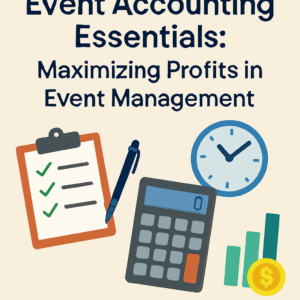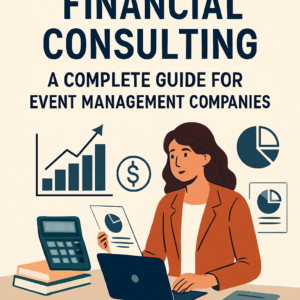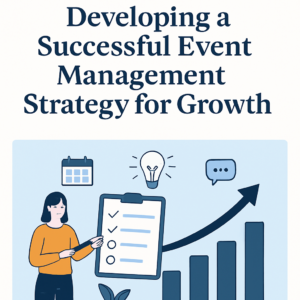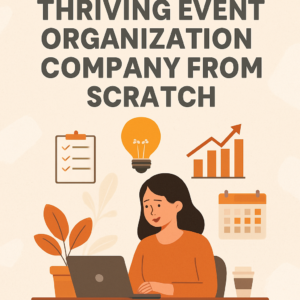Beyond the Boardroom: Transforming Corporate Meetings into Strategic Investments
In today’s fast-paced corporate world, meetings are often seen as a necessary evil—an obligatory pause in productivity rather than a catalyst for strategic growth. But what if we could shift this narrative? By rethinking how we conduct corporate meetings, they can become powerful investments in our company’s future. Let’s explore how to create meetings that drive innovation and efficiency, turning them from mundane to magnificent.
Rethinking the Purpose of Corporate Meetings
Let’s face it, “corporate meetings” can often feel like a necessary evil—an obligation that eats up time and resources. But what if we could transform those obligatory gatherings into strategic investments? It’s time to shift our perspectives and expectations.
The first step in rethinking corporate meetings is recognizing their potential value. According to a study by the Harvard Business Review, 71% of senior managers said meetings are unproductive and inefficient. Imagine if you could flip that statistic on its head? By redefining the purpose of your company meetings, you can turn these sessions into powerful catalysts for business growth.
Align Meetings with Strategic Goals
- Outcome-Oriented Agendas: Start with a clear meeting agenda that focuses on specific outcomes rather than generic updates. This approach ensures every meeting has a defined purpose and goal.
- Prioritize Essential Attendees: Think quality over quantity. Invite only those who absolutely need to be there, keeping the group focused and engaged.
- Integrate Data-Driven Insights: Leverage data analytics tools to provide insights during executive meetings, enabling more informed decision-making.
If this sounds like a daunting task, remember there are resources available to help streamline your meeting planning process. For instance, the strategic role of a CFO can significantly enhance your approach by aligning financial strategies with business objectives.
Create an Engaging Experience
Nobody wants to sit through another snooze-fest. Turn corporate gatherings into engaging experiences by incorporating elements such as:
- Interactive Technologies: Use platforms that allow for real-time collaboration and feedback during both virtual corporate meetings and in-person sessions.
- Cultural Enrichment: Mix things up with themes or activities that reflect your company’s culture and values. Think outside the boardroom!
- Diverse Perspectives: Encourage cross-departmental interactions, bringing diverse viewpoints into the conversation for a richer dialogue.
The ultimate goal is not just to have more efficient meetings but to create an environment where ideas flourish and strategic decisions are made collaboratively. As you redefine how you view corporate conferences, remember they’re not just about ticking boxes—they’re about paving the way for future success.
“Meetings should be like salt—a spice sprinkled carefully on food—not poured recklessly over every dish.” — Unknown
This quote perfectly captures how we should approach our professional gatherings. So next time you’re planning a stakeholder meeting or strategizing an executive retreat, consider how it aligns with your broader business goals. With thoughtful planning and execution, your corporate events can become key contributors to your long-term success.
Crafting a Meeting Agenda that Matters
Let’s face it, folks: we’ve all been there. Trapped in a business meeting that seemed to drag on without any clear direction or purpose. Not exactly the most thrilling way to spend your time, right? That’s why crafting an effective meeting agenda can be a game-changer for your corporate meetings.
1. Start with Clear Objectives: Your agenda should begin with a clear understanding of what you aim to achieve. Is it to foster innovation during a team meeting or align goals in an executive meeting? Whatever the purpose, defining it from the get-go sets the tone and keeps everyone laser-focused.
2. Prioritize Topics by Importance: It’s tempting to throw everything into one corporate gathering, but overwhelming your meeting with too many topics can dilute its effectiveness. Instead, prioritize key issues and tackle them first while energy levels are high.
3. Time Allocation: Assign time slots for each agenda item and stick to them like glue! This not only helps keep the meeting on track but also respects everyone’s time—a precious commodity in any corporate retreat or business conference.
4. Include Breaks: Let’s be honest, even power players need a moment to recharge during lengthy discussions. Schedule short breaks to prevent burnout and give participants a chance to process information and network informally.
“A goal without a plan is just a wish.” – Antoine de Saint-Exupéry
This timeless wisdom is especially pertinent when planning professional meetings. A well-structured agenda transforms wishes into actionable plans.
Pitfalls of Poor Planning
- Lack of Direction: Meetings without targeted agendas often veer off-track, resulting in wasted time and resources.
- Diminished Engagement: Participants may disengage if they feel their contributions aren’t valued or aligned with meeting objectives.
- Inefficient Use of Resources: Without an agenda, you risk inefficient utilization of valuable company resources such as executive time and expertise.
The key takeaway? An impactful meeting agenda is less about ticking boxes and more about fostering meaningful dialogue that drives strategic investment in your company meetings. To delve deeper into strategic planning for your event-driven enterprise, feel free to explore the role of strategic financial guidance.
Leveraging Technology for Virtual and Hybrid Meetings
In today’s ever-evolving digital landscape, the way we conduct corporate meetings has undergone a significant transformation. Gone are the days when business leaders were limited to stuffy boardrooms or expensive travel arrangements. With the advent of technology, virtual and hybrid meetings have emerged as powerful tools that can turn every meeting into a strategic investment.
But how do we make the most out of these virtual gatherings without turning them into glorified email exchanges? Let’s dive into some tech-savvy strategies:
1. Embrace the Power of Video Conferencing Tools
The rise in platforms like Zoom, Microsoft Teams, and Google Meet has made it easier than ever to host efficient and engaging business meetings. These tools offer a plethora of features such as screen sharing, breakout rooms, and real-time collaboration. According to a study by Global News, Zoom saw a 355% increase in sales during 2020 alone, highlighting just how integral video conferencing has become.
2. Utilize Interactive Platforms for Engagement
No one wants to feel like they are talking to an endless sea of muted microphones. To foster engagement during executive meetings, consider incorporating interactive technology such as polls, Q&A sessions, or live reactions. Platforms like Slido or Mentimeter can transform your virtual gathering from a lecture into an interactive experience.
3. Leverage Cloud-Based Document Sharing
Avoid the dreaded “Can you see my screen?” mishap by using cloud-based solutions like Google Drive or Dropbox for seamless document sharing. This allows participants to access necessary files on their own devices, making company meetings smoother and more efficient.
The Future is Here: Hybrid Meetings
Hybrid corporate meetings, which blend in-person and remote participation, are increasingly becoming the norm. They offer flexibility and ensure inclusivity for all team members. Software solutions like Hopin or Cisco Webex enable seamless integration between physical and virtual audiences.
“The key to successful hybrid meetings lies in treating online participants as equals,” says John Smith, a renowned expert in digital communication strategies.
This approach not only maximizes participation but also enhances productivity by allowing stakeholders from different locations to contribute effectively without the need for costly travel expenses—something that might even help you learn about reducing business costs!
By embracing these technologies and strategies, you’re not only modernizing your approach but also ensuring your corporate events truly serve as strategic investments for your organization’s growth.
Engaging Stakeholders through Interactive Formats
When it comes to corporate meetings, the days of monotonous monologues and endless PowerPoint slides are slowly fading into the distant past. Today’s thriving businesses understand that to truly engage stakeholders, you need more than just a conference room and a coffee break. It’s about making every moment count through interactive formats that transform standard business accountability sessions into dynamic experiences.
Why Go Interactive?
- Cognitive Engagement: Interactive meetings stimulate cognitive engagement. According to a study by Forbes, employees who are actively engaged in meetings are more productive and contribute innovative ideas.
- Improves Retention: By transforming data-heavy presentations into quizzes or live polls, attendees retain more information — it’s like turning your meeting agenda into a game show but with fewer commercial breaks!
- Fosters Collaboration: When stakeholders become participants rather than passive listeners, collaboration naturally follows. This could be as simple as breaking into smaller groups for brainstorming sessions or using digital platforms for real-time feedback.
Interactive Formats Worth Considering
If you’re looking to shake up your next corporate gathering or quarterly meeting, here are a few formats that can breathe new life into your discussions:
- World Café Sessions: This format breaks large groups into smaller discussion clusters, each tackling different aspects of the main topic. It’s like having multiple intriguing conversations at once — without the awkwardness of cocktail party interruptions.
- Peppered Panels: Instead of traditional panels, incorporate live Q&A segments where stakeholders can submit questions in real-time via apps like Slido or Pigeonhole Live. This keeps everyone on their toes, including the speakers!
- Fishbowl Conversations: Create an inner circle of speakers with an outer circle of listeners who can swap places to join the conversation. It’s an excellent way to ensure varied perspectives without turning your meeting room into a game of musical chairs.
- Interactive Workshops: Encourage hands-on activities related to strategic planning sessions or professional development sessions where participants can apply concepts immediately.
No matter how interactive you decide to make your corporate conference, remember that the goal is to facilitate open dialogue and foster connections.[1]
“Interactive meetings not only increase engagement but also drive innovation and collaboration.” — Meeting Net
If you’re keen on transforming your executive meetings into vibrant hubs of innovation and engagement, consider exploring interactive formats next time you’re setting up your corporate meeting solutions. Your stakeholders will appreciate not just being heard but being involved — and who knows? They might even thank you for making meetings less snooze-worthy!
[1] Source: Meeting Net on Engaging Employees
The Role of Professional Development in Corporate Meetings
Let’s face it—corporate meetings are often associated with drab conference rooms, stale coffee, and endless PowerPoint slides. But what if we flipped the script and harnessed these gatherings as platforms for professional development? Now we’re talking about transforming your typical business meeting into an investment in both your team and your company’s future.
Engaging employees through professional development not only spices up those dreaded meetings but also aligns with organizational goals, boosting morale and productivity. Imagine a world where each meeting attendee leaves the room saying, “I actually learned something today!” Sounds too good to be true? Let’s break it down.
Why Professional Development?
- Skill Enhancement: Incorporating workshops or mini-training sessions can enhance skills relevant to your industry. According to LinkedIn’s 2023 Workplace Learning Report, 94% of employees say they would stay at a company longer if it invested in their career development.
- Cohesion and Team Building: When professional development is part of corporate meetings, it encourages team bonding through shared learning experiences. This can lead to improved collaboration during strategic planning sessions or corporate retreats.
- Innovation Encouragement: New skills foster innovation. A McKinsey study revealed that organizations with a strong learning culture are more than three times likely to be market leaders in their industry.
Tactics for Incorporating Development into Meetings
If you’re ready to ditch the blahs of traditional meetings, consider these tactics to infuse some life—and learning—into them:
- Guest Speakers: Invite industry experts who can offer fresh perspectives and insights relevant to your business goals. It’s like adding a dash of TED Talk magic without leaving your office space (or virtual meeting room).
- Interactive Workshops: Transform parts of your executive meetings into hands-on workshops where everyone rolls up their sleeves for real-world problem-solving.
- An Internal Skill Exchange Program: Encourage team members to share their unique skills with each other through quick presentations or group activities. This builds internal expertise without additional costs.
- Acknowledge Growth: Recognize personal achievements during company meetings as a way to celebrate continuous learning—because who doesn’t love a little public kudos?
The days when corporate conferences were just about ticking items off an agenda are long gone. By integrating professional development into these spaces, you’re not just planning another meeting; you’re cultivating an environment that values growth and innovation. So next time you host a stakeholder meeting or annual business retreat, remember: it’s more than just a gathering; it’s an opportunity for strategic investment in your team’s potential.
“The only thing worse than training your employees and having them leave is not training them and having them stay.” — Henry Ford
The world is moving fast—don’t let your corporate practices lag behind! Embrace professional development as a core element of corporate gatherings today. Trust us; you’ll thank yourself tomorrow!
Evaluating the Impact of Your Meetings
Let’s face it, not all corporate meetings are created equal. Some might feel like they could have been summed up in a snappy email, while others are the catalysts for groundbreaking company strategies. So, how do you tell if your meeting was time well spent or just another office gathering with too many doughnuts? Evaluating the impact of your meetings is crucial, and here’s how you can do it without needing a PhD in meetingology (yes, we made that up!).
1. Set Clear Objectives
The first rule in assessing a meeting’s success is knowing what you want to achieve. Before you gather everyone around the table (or screen), define clear objectives. Are you aiming to kick off a new project, align on strategy during quarterly meetings, or make decisions during a strategic planning session? Having specific goals allows you to measure outcomes against expectations.
2. Gather Feedback from Participants
Nobody knows the impact of a meeting better than those who attended it. After your business meetings or executive gatherings, collect feedback through surveys or informal conversations. Ask participants whether the agenda was covered effectively, if they felt engaged, and whether action points were clearly communicated. This information is invaluable for tweaking future sessions.
“Meetings often are seen as productivity killers; however, when done right, they can enhance team collaboration and drive business success.” — Forbes
3. Measure Against Financial Goals
The bottom line matters! Assess whether your team meetings aligned with financial objectives laid out in your company’s strategic plan. Did the outcomes contribute to cost savings or improved revenue streams? For more insights on aligning meetings with financial strategies, check out How to Create a Financial Plan for Event Planning Business.
4. Monitor Long-term Outcomes
A successful corporate conference or team retreat should lead to long-term benefits like improved project workflows or enhanced client relationships. Keep an eye on key metrics such as project timelines and customer satisfaction scores post-meeting to gauge real impact.
- Follow-up Actions: Were tasks completed on time?
- Team Morale: Did your leadership meetings boost motivation?
- Client Retention: Did corporate networking events lead to new business opportunities?
Your business deserves more than run-of-the-mill office meetings that just take up calendar space. By evaluating their impact thoughtfully and strategically, you can transform them into powerful tools that propel your organization forward.
By transforming corporate meetings into strategic investments, businesses can unlock untapped potential within their teams. With intentional planning, innovative technology, and a focus on engagement, meetings evolve from routine obligations into pivotal moments driving growth and success.









